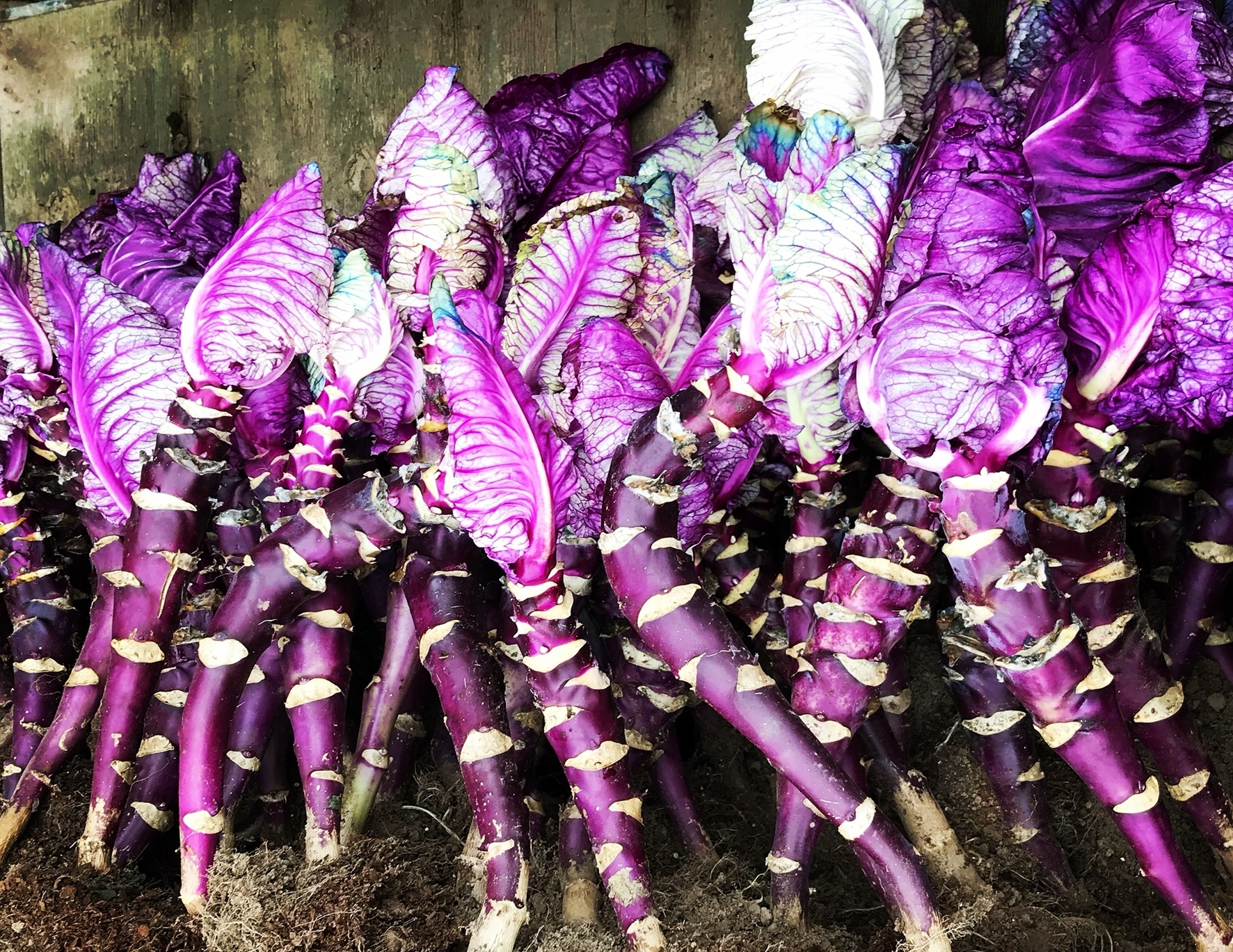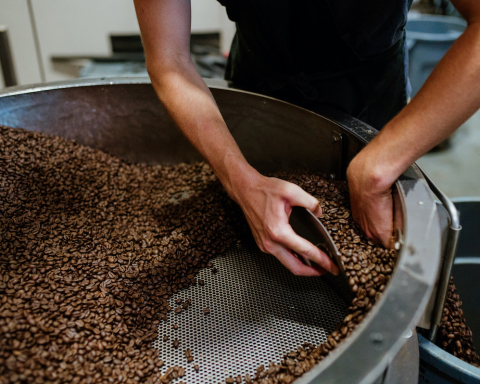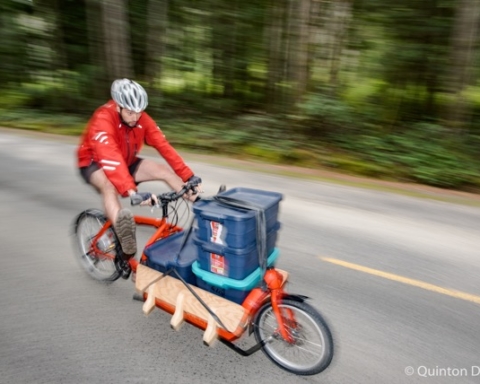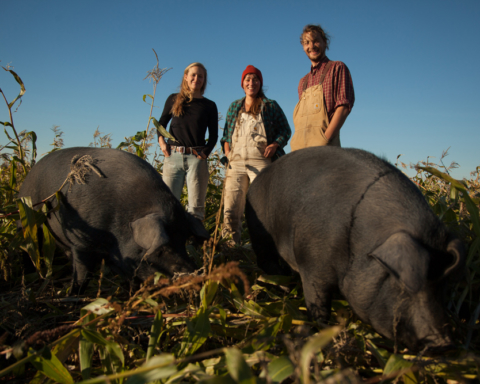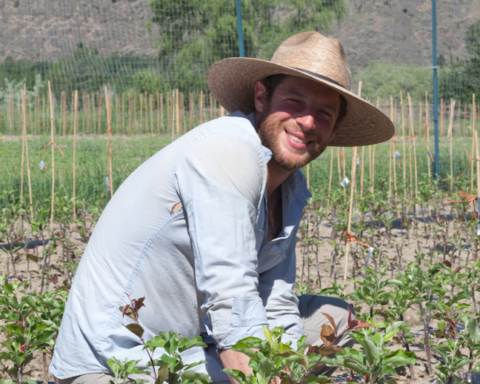B.C. Eco Seed Co-operative
Meagan Curtis
For some, bioregionalism may seem like a practical concept useful for creating ecological dividing lines between regions, but the concept’s meaning extends into social, cultural, and economic realms. One of the foremost ecotheologians of the 20th century saw bioregionalism as critical for the next era of human life on earth, feeling it should encapsulate “a self-propagating, self-nourishing, self-educating, self-healing and self-fulfilling community.”[1] With “bio” standing as its prefix, the concept refers to anything within a region relating to life. This means that it is not just the ecology of our region we need to consider, but also factors such as ethics and economics that are dominating that region.
For the BC Ecological Seed Co-operative (BCESC), our focus is on vegetable, herb, grain, flower, and cover crop seed that is ecologically grown, open-pollinated, regionally adapted, held in the public domain, and GE-free. We want to increase the quantity and improve the quality of ecological and organic seed grown in BC and believe that seed sovereignty is an essential part of sustainable bioregional food systems. This means that when we think about growing resilient seed—seed that performs well in an uncertain climate—the co-op considers a variety of factors from ethics to ecology.
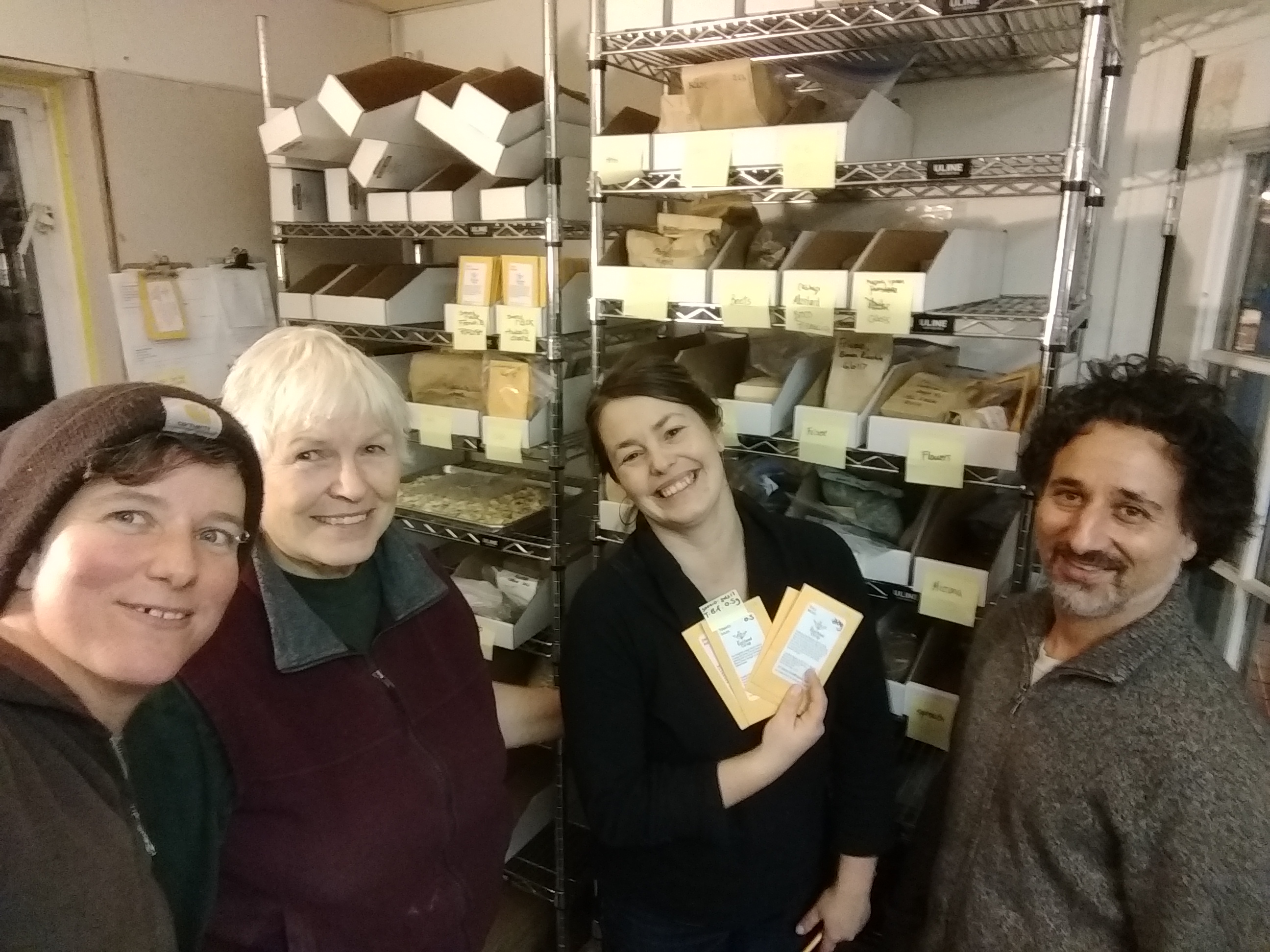
The Bioregional Ecology of Seed
Most of the seeds we use in our BC bioregions, for our gardens or on our farms, are not descendants of native species from our bioregions. With the notable exceptions of berries, pumpkins/gourds, sunflowers, various herbs, and wild rice, most of the crops we grow across the country stem from a very recent part of Canada’s history. [2]
Immediately it appears there may be a disconnect between the ecological emphasis in bioregionalism and the vegetable seeds we grow and produce. This is further complicated by the fact that as seed producers, we know (and maybe even enjoy) the fact that seed is shared across regions, countries, and continents. Seed always has and will continue to travel across borders – if not purposefully, then in the hair of animals, on the boots of travellers, or by the prevailing westerlies.
Right now, most seed bought by gardeners and farmers is not seed originally grown in their bioregion, not even within their own country. By growing seed within bioregions across the province on farms with published locations, the BCESC is working on localizing seed so that buyers know where the seed is coming from and are assured that it performed well in that particular region. In this sense, BCESC seed is regionally-adapted as well as regionally tested as our members trial seed from other member’s farms across the province.
Sitting at approximately 944,735 km2, our province happens to have quite a few different bioregions. Therefore, it should not be assumed that because a lettuce variety does very well on the coast at UBC Farm, it will not perform well in Southern Ontario or that it will perform fantastically in the Okanagan. A certain bioregion in BC may be more similar to a bioregion in another country than to some within our own province. Because of this, the co-op grows its seed with wide spectrum selection in mind in order to create horizontal resistance,[3] making it suited for multiple bioregions across the country. Our growers use large population sizes and shy away from selecting narrowly for one trait so that a wide diversity of traits are preserved and the plant is theoretically more resilient in the end. This means that although BCESC seed is grown and adapted to a bioregion, it also carries enough diversity to potentially thrive in other regions. In the end, the diversity our plants carry emerges from regions and then flows across regions as the seed’s resilience is shared within our province and beyond it.

The Ethics and Socio-Economics of Resilient Seed
Aside from ecological considerations, there are multiple tangible social, economic, and ethical benefits to investing in seed grown within your bioregion. The transparency within an organization like the BCESC means that a dialogue is possible with seed producers and growers in a way impossible in other circumstances. BCESC can respond to varieties that growers in their region would like to see preserved, improved, or increased. For the same economic reasons that we tell people to eat local, we should buy local seed. The economic sustainability of inhabitants of a given bioregion is critical to a healthy society. BCESC’s purpose is to be able to offer farmers the quantities of seed they are looking for. We also offer packet size seed for those with a smaller area or who want to test a variety.
Difficult issues relating to agricultural and food sovereignty can be overwhelming to consider at the international, national, or even provincial level. What may be more available to us is the opportunity to think about, and work on, the socio-economic and ecological health of our bioregion. Working at this level, we may more effectively create the kind of life and systems we want to see flourish. Resilience within a bioregion may also mean transforming our cultural norms and adapting our social relations in order to foster cooperation and collaboration. Bioregionalism indicates to us that perhaps feeding ourselves and future generations in uncertain climatic times involves not only ecological solutions, but social, economic, and ethical as well.
The full range of BCESC inventory is available online at bcecoseedcoop.com. You can also find a selection of packets in racks in local communities across BC:
Vancouver: Figaro’s Garden, 1896 Victoria Dr.
Langley: Cedar Rim Nursery, 7024 Glover Rd.
Nelson: Kootenay Co-op, 777 Baker St.
Prince George: Ave Maria Specialties, 1638 20 Ave.
Smithers: Alpine Plant World, 3441 19 Ave
Meagan Curtis is member of the BC Eco Seed Coop in Port Alberni—on Instagram @mtjoanfarm. Inspired by EF Schumacher, her farm has three goals: health, beauty, and permanenc—productivity is attained as a by-product.
Photos: BC Eco Seed Coop
[1] Berry, T. (1988). The Dream of the Earth. Berkeley: Counterpoint Press. https://gaiaeducation.org/news/cosmopolitan-bioregionalism/ [2] For the origin of geographic origins of our food crops – where they were initially domesticated and evolved over time, see: http://blog.ciat.cgiar.org/origin-of-crops/ [3] Resistance based on the result of continuous selection in the face of adversity based on many genes working together resulting in a healthy plant (Morton, F. (2018). Horizontal Resistance: An Organic Approach to Selection. Wild Garden Seed Catalogue. p. 100: seedstory.files.wordpress.com/2007/12/franksessays-1.pdf )


